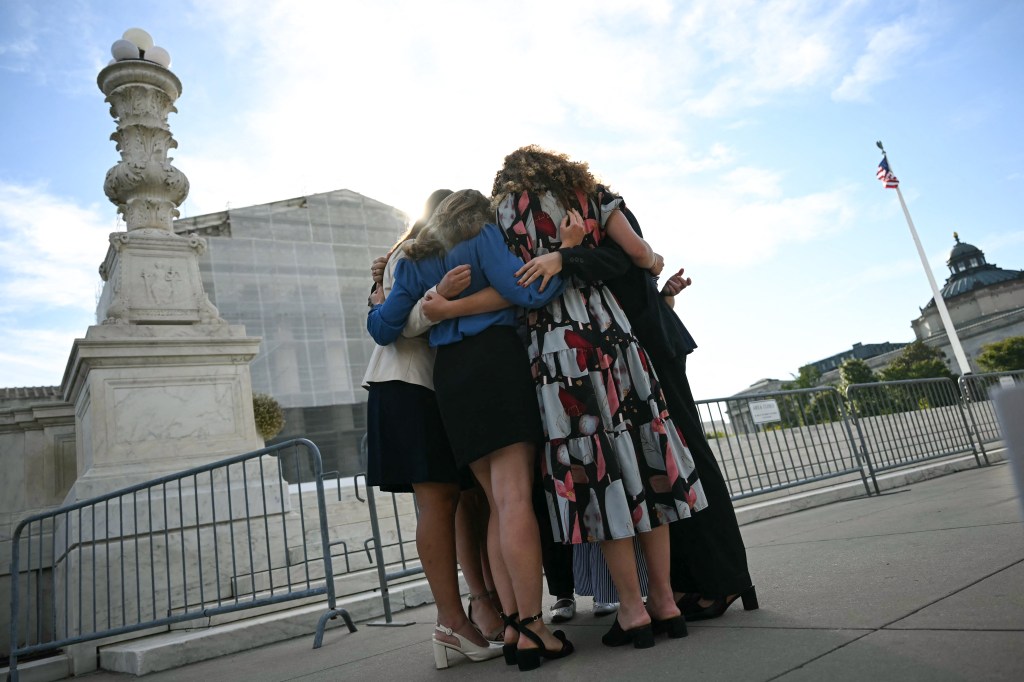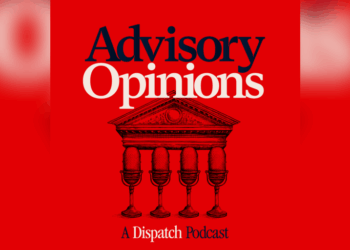
“I don’t really see a difference between the argument that you’re making now and the argument that I thought we rejected,” Justice Samuel Alito said last week in oral arguments for Chiles v. Salazar, pressing Colorado’s solicitor general on whether the state’s 2019 ban on “conversion therapy” regulates speech or conduct. Later in the exchange, after the attorney insisted the law would never be used to punish counseling that merely helps gay teens pursue celibacy, Alito cut to the heart of the concern: If that limit isn’t in the text, what protects those counselors tomorrow?
That question isn’t abstract for me. I’m a survivor of conversion therapy who now counsels Christians wrestling with faith and sexuality. I want kids protected from real harm. But I also want parents and therapists free to pursue care that aligns with their faith, without being labeled dangerous. The Supreme Court’s ruling, when it comes at the end of this term, will shape both freedoms.
Colorado defines “conversion therapy” as licensed counseling aimed at changing “sexual orientation or gender identity, including efforts to change behaviors or gender expressions or to eliminate or reduce sexual or romantic attraction or feelings toward individuals of the same sex.”
From age 15 to 25, I tried to change. I met with three therapists who promised to make me straight. I attended ex-gay retreats that reenacted trauma in search of “healing.” A pray-the-gay-away pastor blamed my homosexuality on a lack of parental touch after being in a full-body cast for four months as a toddler. In a charismatic session, I was publicly told my inability to “hear the Spirit” meant unrepented sin was blocking my “sexual wholeness.”
Like 96 percent of conversion therapy survivors, nothing about my orientation changed, but my anxiety and depression deepened. Thankfully, I avoided the worst outcomes, but studies show that conversion therapy nearly doubled suicide attempts among participants. That is not a risk the church should ever ask kids to bear.
Because of stories like these, I support narrow, precise bans on conversion therapy for minors that prohibit promises to eliminate same-sex attraction or gender incongruence (an acute sense that one’s gender does not correspond with the experience typically associated with the person’s biological sex) and replace them with robust opposite-sex attraction or gender congruence.
So why am I uneasy about Colorado’s statute even as I oppose conversion therapy? In short, the bill’s text could be used by future politicians to penalize Christian therapists who merely help LGBT+ teens resist same-sex sexual temptations, reduce same-sex romantic and sexual behaviors, or prioritize Christian identity. For many readers, the statute goes beyond narrowly banning sexual/gender orientation change to punishing identity and behavior change. While nuanced, there’s a meaningful difference between promising to change who someone is attracted to or whether they feel like a man/woman on the inside (orientation change) versus helping someone pursue celibacy (behavior change) or publicly identity as Christian instead of trans (identity change).
The problem is syntactic as much as substantive. In the Colorado definition, the phrase that follows including (“efforts to change behaviors or gender expressions … ”) is grammatically ambiguous. In linguistic terms, it’s unclear whether including is used illustratively (banning only practices meant to change orientation) or definitionally (making behavior/identity change themselves count as conversion therapy, regardless of purpose). Depending on how one reads that single word, the Colorado statute could either narrowly target orientation-change efforts or broadly penalize ordinary Christian therapy.
Colorado’s solicitor general, defending the law before the Supreme Court last week, insisted it “only bans performing a treatment that seeks the predetermined outcome of changing a minor’s sexual orientation or gender identity” and “does not stop a professional from expressing any viewpoint.” But as Justice Alito replied, “I don’t see that limitation in the text of the statute. The statute says ‘including efforts to change behaviors or gender expressions.’ So why isn’t that broader than what you’re describing?” The law’s plain language could easily be read to make those behaviors themselves sanctionable, regardless of intent.
What stops a politician from choosing the broader reading and disciplining therapists who help teens resist same-sex sexual temptation, reduce same-sex romantic behavior, or find identity in Christ rather than sexuality or gender?
Colorado’s current attorney general says he would enforce the law narrowly and notes it hasn’t been used since 2019. But administrations change. A future AG could discipline a therapist who, at a teen’s request and with parental consent, helps that teen reduce gay pornography use or gay romance with a classmate, identify as Christian instead of gay or trans, accept biological sex while enduring gender incongruence, or reverse a social transition. Those are not the coercive practices of my youth. They are value-congruent goals that even secular clinicians may support. Yet the law’s letter could be stretched to punish them.
Even the justices noticed this tension during oral arguments. Justice Sonia Sotomayor questioned whether there was any “imminent and credible threat of prosecution,” given Colorado’s assurances. But the attorney for Kaley Chiles, the Christian therapist who filed the lawsuit against Colorado’s government, reminded the court that the state had told lower courts the opposite: that “efforts to change unwanted same-sex behavior or reduce unwanted same-sex attraction” would indeed violate the law. That contradiction reveals exactly how unstable the statute’s wording is.
Justice Clarence Thomas pressed Colorado even further, asking whether helping a teen resist temptation would be constitutionally protected if a pastor said it, but punishable if a licensed therapist did. That question struck at the heart of the issue: When faith-shaped care takes place in a licensed office, does it lose its First Amendment protection?
This is not a hypothetical worry. Federal courts are already split on how speech in the therapy room relates to professional conduct. The 11th U.S. Circuit Court of Appeals struck down local bans in Florida as unconstitutional speech restrictions in Otto v. Boca Raton. The 9th and 10th Circuits have upheld state rules that let licensing boards treat conversion therapy as professional misconduct (Tingley v. Ferguson). That split is precisely why the Supreme Court agreed to hear Chiles.
Supporters of the ban point to carve-outs in the law protecting “sexual-orientation-neutral interventions to prevent or address unlawful conduct or unsafe sexual practices, as long as counseling does not seek to change sexual orientation or gender identity.” But practices like reducing romantic activity with a same-sex classmate or resisting sexual fantasy push back against teen behavior that many non-Christians would consider both lawful and “safe.” Moreover, a plain reading of “change gender identity” suggests the law bans therapists from helping a teen cease trans identification and return to their given name/pronouns. Some defenders admit the Colorado Legislature didn’t understand how these phrases are used by teens, parents, and therapists, and “gender identity change” is really only meant to mean “completely eliminating gender incongruence” and should have instead used “gender orientation change.” But herein lies the problem: Legislators’ lack of expertise has led to a lack of clarity in the law that must be resolved.
Another argument is that we should trust future state officials and the spirit of the law, not its letter. But why? The very people tasked with enforcement have already shown they don’t fully understand what they’re legislating. Even the justices struggled to draw that line in oral arguments. Justice Amy Coney Barrett pressed Colorado to clarify how its law differs from the court’s earlier decision protecting pregnancy centers that refused to list abortion as an option, while Justice Ketanji Brown Jackson emphasized that the entire case turns on “the very narrow context where a health care provider is delivering health care to a patient.” If the highest court in the land can’t confidently parse where expression ends and regulation begins, ordinary clinicians have every reason to fear overreach.
History is full of vague moral language stretched by future administrations (Comstock Act, Sedition and Espionage Acts, etc.). Why settle for a sloppy statute today that could be misused tomorrow? Why not ask for better laws that reflect psychological precision and theological nuance?
When ambiguity exists, who deserves the benefit of the doubt: politicians and lawyers with limited understanding, or parents and licensed therapists walking faithfully with their children? It is wiser to err on the side of trusting families and the care they choose.
For these reasons, I’m praying the court upholds precise bans on conversion therapy that promises to eliminate same-sex attractions or gender incongruence completely. And I hope the court instructs Colorado to do better. Legislatures should write with clarity, forbidding what truly harms and protecting what does not. Broad, vague laws give future politicians dangerous latitude to weaponize their words against ordinary Christian therapists, pastors, and parents.
If our fears ever prove warranted and a future attorney general interprets these laws to punish therapists for helping teens resist temptation, what would stop states from going even further? What would prevent them from extending this policing of belief from the therapy room into pews and kitchen tables? It would be wiser to build more barriers between that possibility and where we are today, not fewer. Good intentions do not excuse imprecision. Justice, especially for vulnerable children, deserves better craftsmanship than that.

















